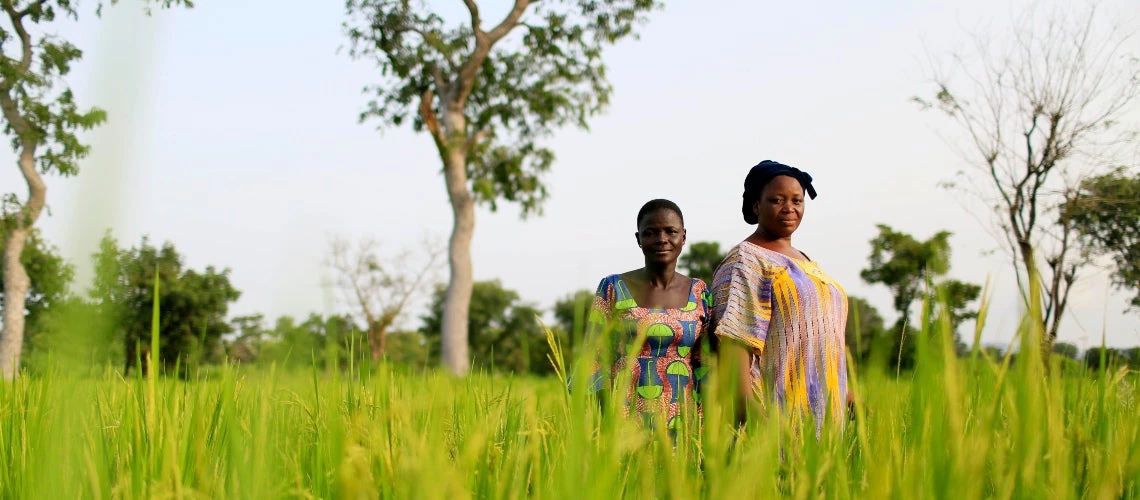 The new World Bank Group gender strategy calls for securing women’s legal rights, control, and access to housing, land, and other physical property. Copyright: Erick Kaglan/World Bank
The new World Bank Group gender strategy calls for securing women’s legal rights, control, and access to housing, land, and other physical property. Copyright: Erick Kaglan/World Bank
What does it take for women to get their land rights secured? According to the women of GROOTS-Kenya, a national movement of grassroots women-led community-based groups, it takes perseverance, patience, and collaboration. The women that we met on a recent visit with GROOTS to Nakuru Town and Kuresoi communities in Kenya obtained formal land rights by organizing and supporting each other, challenging social norms, and identifying and cultivating male champions.
The World Bank Group’s Gender Strategy for 2024-2030 calls for expanding the ownership and use of housing, land, and other physical property (HLP). Securing women’s legal rights, control, and access to HLP are crucial as an asset for income generation, food security, access to credit, and other economic benefits.
As highlighted in our recent paper, Why Land and Property Rights Matter for Gender Equality, strengthening women’s rights to HLP can also have positive impacts across a range of outcomes, including:
- Greater bargaining and decision-making power of women;
- reduced domestic violence;
- increased consumption;
- better child welfare; and
- the ability to transition to off-farm labor and income.
Barriers to women’s HLP rights
While data on women’s rights to HLP is limited, evidence from 53 countries shows that over 70 percent of women do not own any land. Without action, women are at risk of being left farther behind and more at risk for climate related disasters. When women’s property rights are secure, they will have more incentive to invest in soil conservation and other climate smart agriculture.
The legal framework for land ownership can have a significant impact on women’s rights to use, own, and manage HLP assets. Women, Business, and the Law (WBL) data shows that 40 percent of countries still have laws that limit women’s asset rights and ownership in some way. Women’s ability to secure their rights to HLP is not only based on statutory law; it also is dependent on customs, traditions, and religious practices, which often lead to conflicting or overlapping jurisdictions and interpretations. For more insights into these informal institutions please see the new gender policy note on norms.
When statutory laws on property rights intersect with marital and inheritance practices, women are at risk of losing out. For example, in many countries, the concept of “head of the family” relegates women to a secondary or even dependent status. In the case of inheritance, many traditional tenure systems limit women’s ability to inherit land.
Other impediments to women’s HLP rights and access include women’s lower levels of knowledge of their rights to HLP and an understanding of how to enforce those rights; difficulty purchasing land due to lower levels of labor force participation and wages; lack of identification documents; and other administrative barriers such as registration forms that do not include space for a spouse’s name.
Emerging evidence and experience point to three categories of interventions that can strengthen women’s rights to HLP:
- Are legal or regulatory improvements needed?
Legal, regulatory, policy, and institutional reforms recognizing women’s right to access, own, transfer, bequeath, and inherit land can make a substantial difference in women’s land ownership. Other important measures include designating the default marital property regime to be community property; public outreach; and training for land staff, community leaders and women. Here are some examples of these reforms:
- Lesotho passed the Legal Capacity of Married Persons Act and established a new efficient Land Administration Authority. It also introduced a systematic titling intervention that would only provide free mapping and titling for married couples if they agreed to joint titling, which resulted in 85 percent of systematic titles registered individually or jointly to women.
- In Albania, through a legal change, the government mandated notaries to recognize the co-ownership of immovable property obtained during marriage under the community of property regime.
- Incentives to register women's HLP rights
Incentivizing, or even requiring, joint registration of married couples better ensures women are included in the documentation of HLP rights. These can be done through land mapping, demarcation, titling, regularization, formalization or spatial planning efforts.
For example, a randomized control trial in Uganda showed that providing men with persuasive information about the family benefits of adding their wife’s name to the title and requiring that decision to be made in the presence of the wife, increased the share of households that chose to register land in both spouses’ names (rather than in the husband’s name only) from around 66 percent to 91 percent. In Rwanda, the land tenure regularization effort required registration of married female spouses by default, further enforced by the country’s 1999 inheritance law. This led to improved access to land for legally married women. This highlights the importance of the legal and institutional framework, as well as offering incentives and conditions to encourage joint registration.
- Increasing women's participation in land governance institutions
Women’s participation in land governance functions and institutions is paramount to ensure women have more say in longer term land management and allocation decisions. New legal frameworks in Liberia and Sierra Leone seek to strengthen collective land and resource tenure rights and strengthen the roles of women in the land and resource governance institutions through quotas for their formal participation. These quotas have been successfully implemented in a pilot in four communities in Liberia.
The barriers and impediments to women’s HLP rights are many, but emerging evidence shows they can be addressed successfully to the benefit of both women and men. For more detailed interventions please see the recently improved Integrating Gender into Land Projects: A Toolkit (available also in French and Spanish).
To receive weekly articles, sign-up here



Join the Conversation